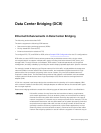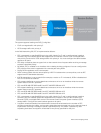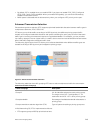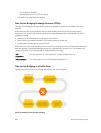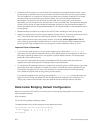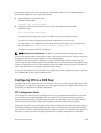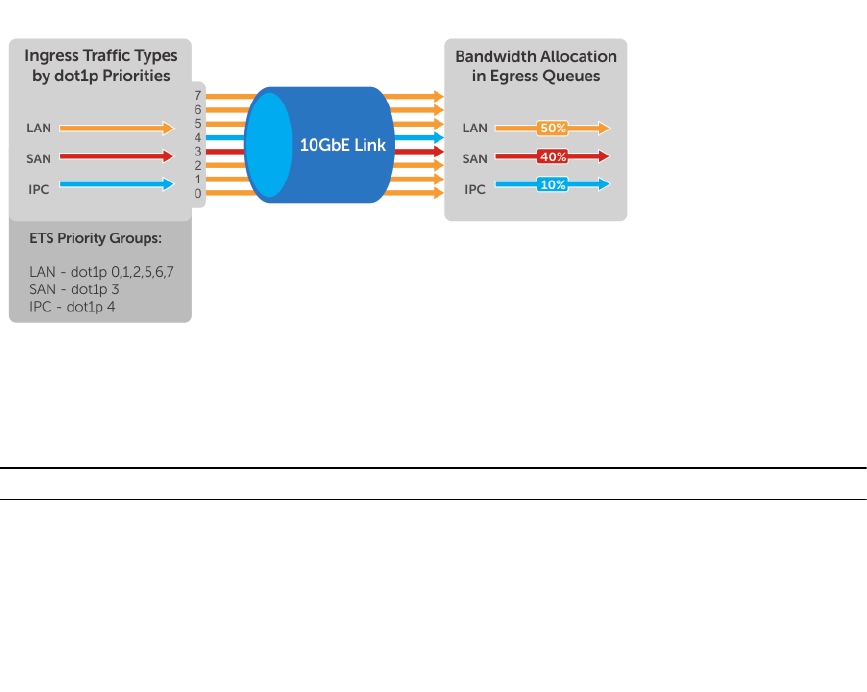
• By default, PFC is enabled when you enable DCB. If you have not loaded FCoE_DCB_Config and
iSCSI_DCB_Config, DCB is disabled. When you enable DCB globally, you cannot simultaneously
enable link-level flow control.
• Buffer space is allocated and de-allocated only when you configure a PFC priority on the port.
Enhanced Transmission Selection
Enhanced transmission selection (ETS) supports optimized bandwidth allocation between traffic types in
multiprotocol (Ethernet, FCoE, SCSI) links.
ETS allows you to divide traffic according to its 802.1p priority into different priority groups (traffic
classes) and configure bandwidth allocation and queue scheduling for each group to ensure that each
traffic type is correctly prioritized and receives its required bandwidth. For example, you can prioritize
low-latency storage or server cluster traffic in a traffic class to receive more bandwidth and restrict best-
effort LAN traffic assigned to a different traffic class.
The following figure shows how ETS allows you to allocate bandwidth when different traffic types are
classed according to 802.1p priority and mapped to priority groups.
Figure 27. Enhanced Transmission Selection
The following table lists the traffic groupings ETS uses to select multiprotocol traffic for transmission.
Table 13. ETS Traffic Groupings
Traffic Groupings Description
Group ID A 4-bit identifier assigned to each priority group.
The range is from 0 to 7 configurable; 8 - 14
reservation and 15.0 - 15.7 is strict priority group..
Group bandwidth Percentage of available bandwidth allocated to a
priority group.
Group transmission selection algorithm (TSA) Type of queue scheduling a priority group uses.
In Dell Networking OS, ETS is implemented as follows:
• ETS supports groups of 802.1p priorities that have:
Data Center Bridging (DCB)
249








